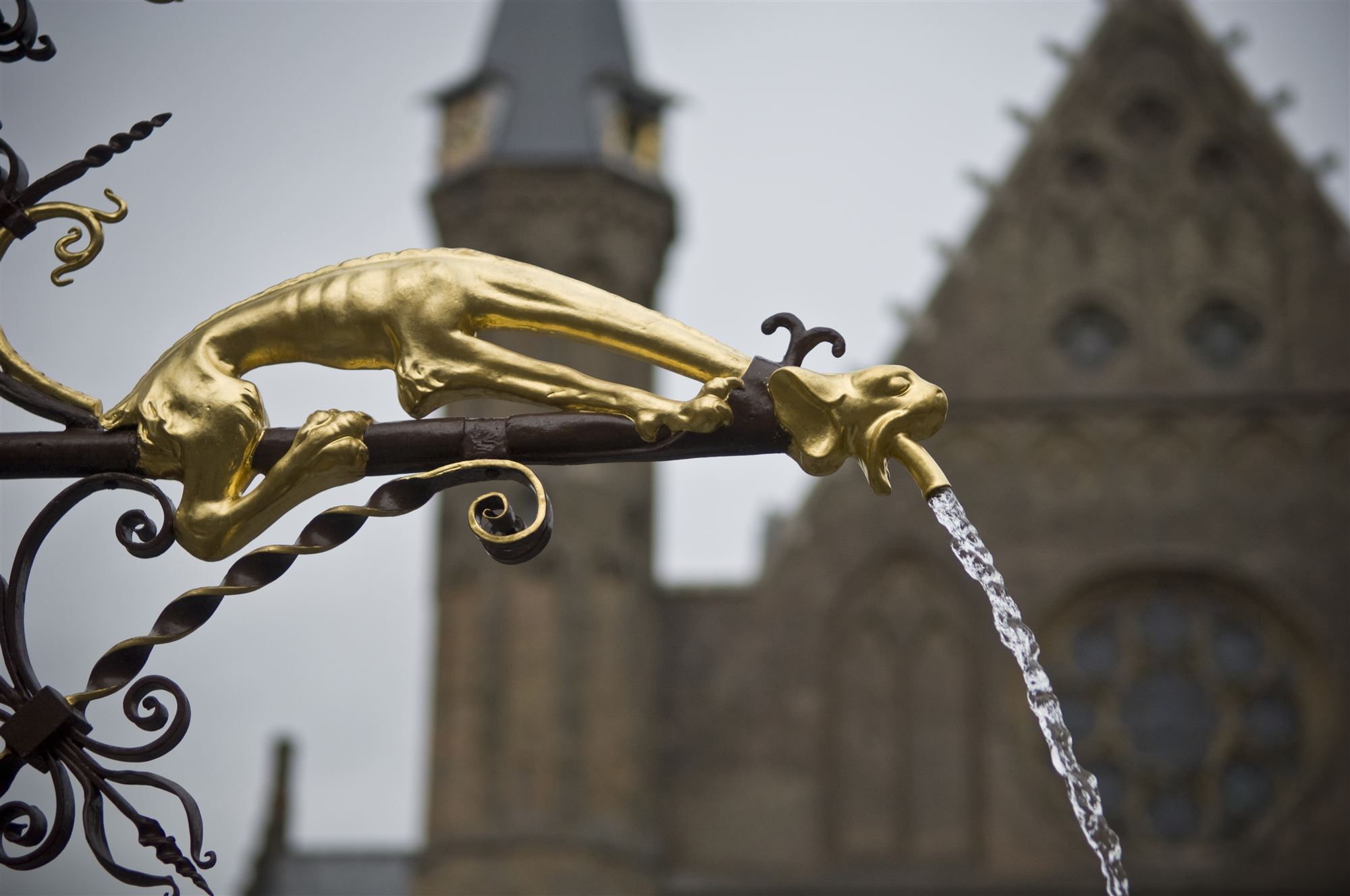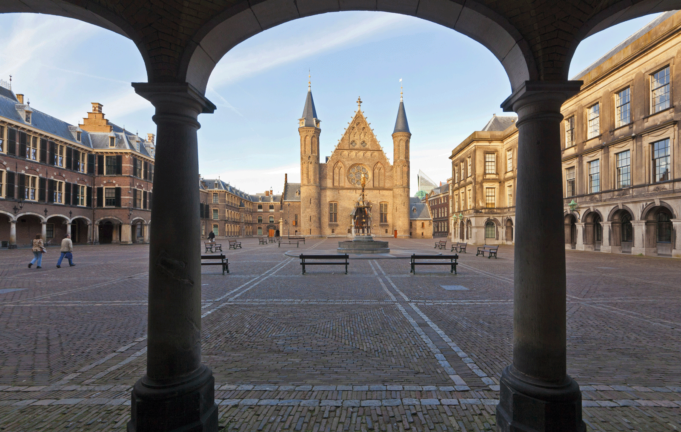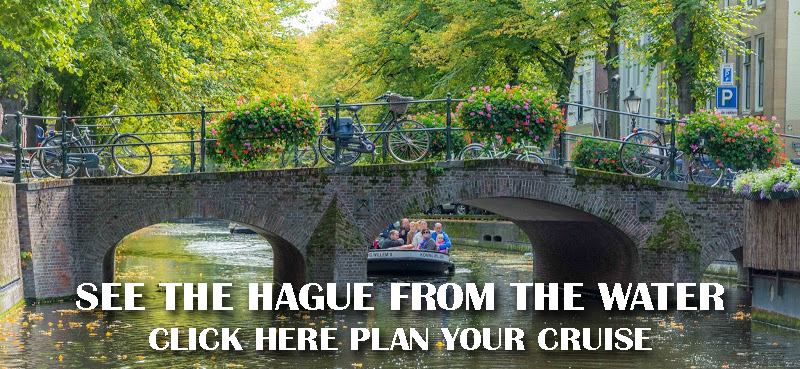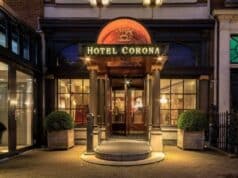Did you know that the fountain at the Binnenhof in The Hague was originally designed for the World Exhibition in Amsterdam in 1883? Currently the neo-Gothic fountain is undergoing a major renovation.
All detachable parts like the copper gargolyes have been taken to a workshop. The remainder of the fountain will be covered by a large tent for a few weeks. The ironwork is painted and partly gilded and the mosaic of the fountain basin is grouted.
The renovation will be completed by the end of March 2018.
Part of the World Exhibition in 1883
The fountain, except for the gilded statue of King Willem II, already excisted. It was designed for the International Colonial and Export Trade Exhibition in Amsterdam in 1883. After the World Exhibition the fountain was moved from Museumplein in Amsterdam to The Hague.
Binnenhof Fountain designed by Dr. P.J.H. Cuypers
The well-known Dutch architect Pierre Cuypers started drawing the first designs of the fountain in November 1882, in close cooperation with Victor de Stuers. Pierre Cuypers is the same architect who was responsible for Amsterdam’s Central Station and Rijksmuseum. He also designed more than 100 churchs, of which about 70 were built, including Sint-Lambertus Church in Veghel and Sint-Vitus Church in Hilversum.

Cost-effective Dutch government
The fountain was a gift from 86 prominent The Hague citizens as a token of appreciation for the restoration of the facade of the Ridderzaal (Knight’s Hall) back in 1879. The fountain was primarily meant to honour King Willem II, the founder of the Binnenhof.
At first the Dutch government was hesitant to accept the gift because of the high costs for water supply and the playing of the fountain. This issue was solved by turning on the fountain on rainy days only.
Braggadocious king
The originally planned carving on the granite basin claimed that King Willem II was the founder of the Dom in Cologne. After fierce debates concerning the truth of this statement, the sentence was adjusted into: “Ter nagedachtenis van Willem II, Roomsch Koning en graaf van Holland, begunstiger der stedelijke vrijheden, beschermer der kunst, stichter der kasteelen in ‘s Gravenhage en Haarlem”. This translates into: “In memory of William II, Roman King and Count of Holland, supporter of city freedoms, patron of the arts, founder of the castles in The Hague and Haarlem”.






